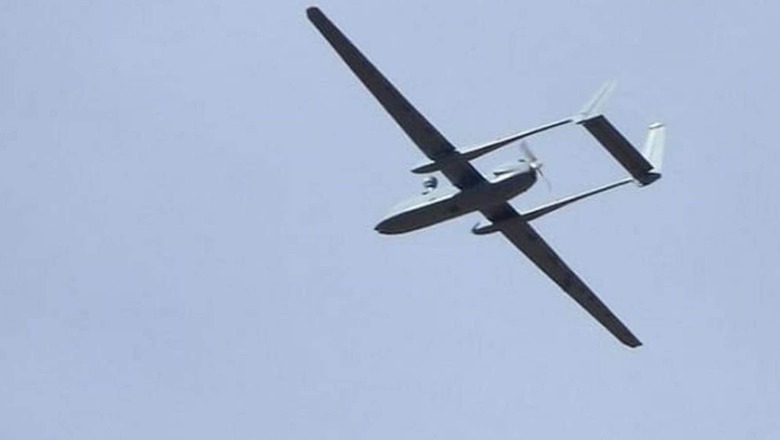
views
The indigenous communication satellite for the Army, GSAT 7B, when launched, will majorly benefit the unmanned aerial vehicles (UAVs) in the force’s inventory by ensuring they have an enhanced flying range in line with their original specifications, top defence sources told News18.
At present, the flying range of the UAVs is restricted since they are controlled by a ground station, which is usually at the line of sight. Defence sources explained that they fly in tandem, which means one unmanned aerial vehicle in the air is controlled by a ground station and a second UAV flying, for instance, is controlled by the first.
“When the Army gets its own communication satellite, the UAVs will be able to fly as per their original specifications, since this satellite can provide secure, encrypted communication to them. This will aid in enhancing the operational reach of the UAVs,” a defence source told News18.
News18 first reported in September last year that India has bought four new Israeli Heron TP drones. They and other Heron TPs in the Armed Forces’ inventory will be upgraded with advanced satellite communication and sensors for longer surveillance and reconnaissance missions, aside from being armed with air-to-ground missiles and laser-guided munitions for precision strikes, under the planned Project Cheetah.
The Defence Acquisition Council (DAC) headed by Rajnath Singh on Tuesday accorded the Acceptance of Necessity (AoN) for the GSAT 7B–an indigenously designed, developed and built satellite for the Army—among a host of other proposals totalling Rs 8,357 crore.
AoN is the first step of the long-drawn defence procurement process which culminates in placing orders for the equipment needed.
Senior defence officials told News18 that it is a positive move for the government to accord the AoN to the Army for having its exclusive communication satellite but cautioned that India still has a long way to go in developing its military capabilities in the space domain, especially at a time when China is investing heavily towards augmenting its satellite programmes.
The officials said China is estimated to have about four times the number of operational satellites India has, some of them exclusively for its military and many others for dual civil-military use. Until 2019, China had close to 300 operational satellites.
The new satellite
As per the Army, this will be a state-of-the-art, multiband, military-grade satellite, which will be a force multiplier in providing fail-safe communication support.
So far, the Army did not have a dedicated satellite of its own, even as it partly shared the GSAT 7A satellite for the Indian Air Force (IAF) launched in 2018 by the Indian Space Research Organisation (ISRO). In 2013, the GSAT 7—the primary communication satellite for the Navy—was launched.
While the Navy has already placed an order to procure the GSAT-7R satellite as a replacement to the existing GSAT 7, the DAC in November last year had approved the proposal to procure the GSAT 7C satellite for the IAF.
These satellites, exclusive to the military, are for communications, even as a range of other Indian satellites as well as those of foreign countries are used for Intelligence-Surveillance Reconnaissance (ISR) purposes.
Boosting India’s network-centric warfare capabilities
As per defence sources, ISRO will likely make and launch the satellite while other Indian companies would supply the various components and subsystems to it.
While they couldn’t confirm the exact time frame of when it would be handed over to the Army, they said the process would take “a few years”.
Defence sources said the satellite, once launched, will enable the Army to secure communications between far-off locations, thus boosting the network-centric warfare capabilities of the force.
While these dedicated satellites will be used for communication purposes, there are over half a dozen satellites also used for military needs, including the Cartosat and Risat (Radar Imaging Satellite) series of satellites. ISRO also launched the EMISAT, an electronic intelligence satellite, for DRDO, in 2019.
Industry sources told News18 that so far the Indian space industry model was completely ISRO-centric, but now there is a full-scale focus on the private industry to generate demand, get the technology, funds, and manufacture.
As per the defence sources quoted above, the tri-service defence space agency may eventually bring the control of all satellites under its ambit, for better management of bandwidth and optimum utilisation.
Read all the Latest News India and Breaking News here




















Comments
0 comment